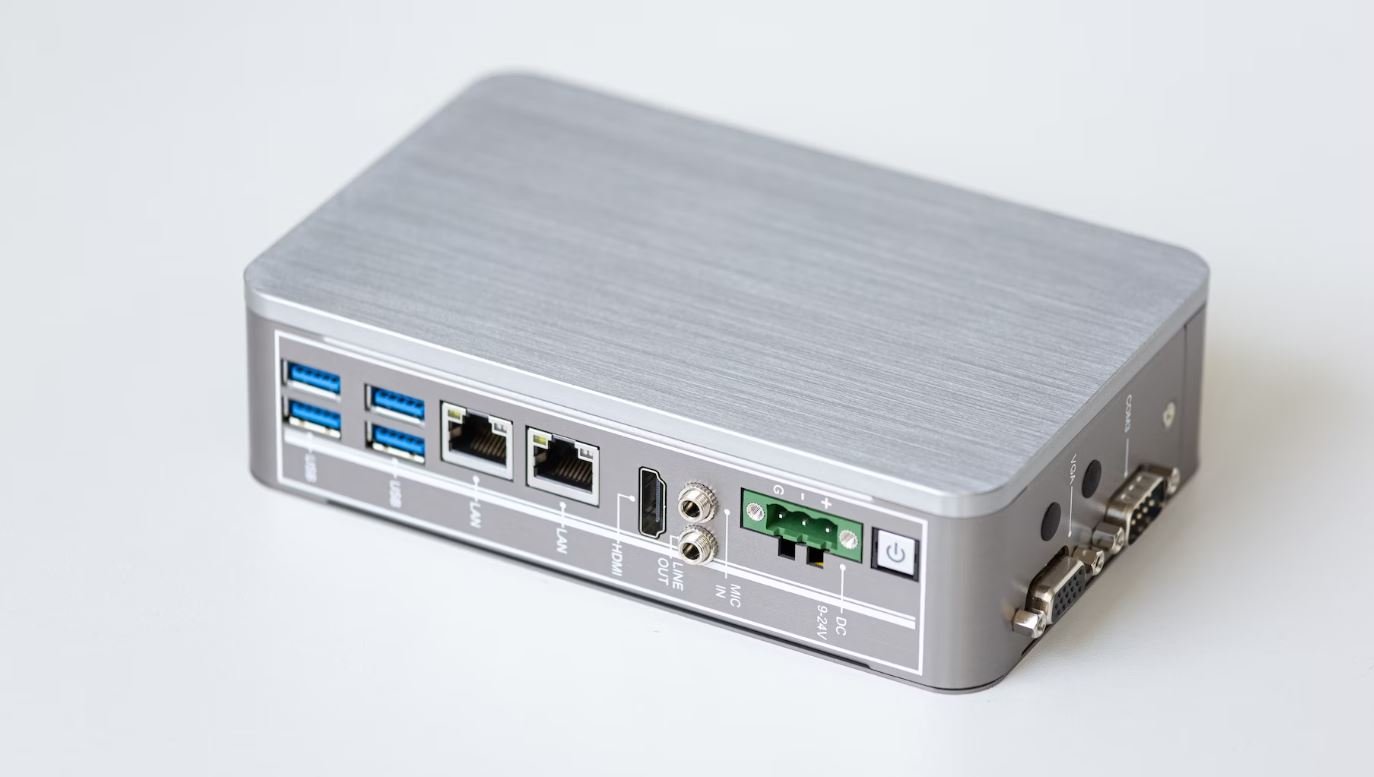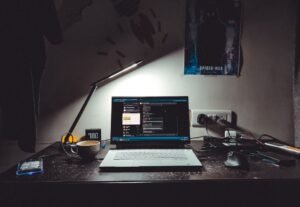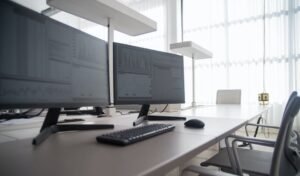AI Art: Pros and Cons
Artificial Intelligence (AI) has revolutionized various industries, including the world of art. AI algorithms are now capable of creating original and compelling artworks, blurring the line between human creativity and machine-generated art. While AI art offers exciting possibilities, it also raises important questions and concerns. In this article, we will explore the pros and cons of AI art, shedding light on its impact and implications.
Key Takeaways:
- AI art pushes the boundaries of creativity.
- AI artists lack human emotions and perspectives.
- AI art challenges traditional artistic practices.
- AI-generated art raises copyright and ownership issues.
- AI art can democratize art production.
Pros of AI Art
1. **Unleashing Creativity**: AI algorithms have the potential to generate unique and unconventional art forms that may not have been envisioned by human artists. *AI algorithms can explore vast combinations of styles, techniques, and concepts, leading to unexpected and innovative artistic creations.*
2. **Exploring New Frontiers**: AI art offers a platform for exploring uncharted territories and pushing the boundaries of artistic expression. *By operating beyond the limitations of human perception and cognitive biases, AI algorithms can generate new aesthetics and challenge traditional notions of what constitutes art.*
3. **Amplifying Human Efforts**: AI can assist artists by automating certain tasks, enabling them to focus more on creative decision-making. *By augmenting human abilities, AI can enhance artistic productivity and amplify the impact of human imagination.*
Cons of AI Art
1. **Lack of Emotional Connection**: AI lacks human emotions and perspectives, which are often integral to the creation and interpretation of art. *This absence of emotional depth may result in the production of art that lacks the profound human experiences and connections that make art meaningful.*
2. **Challenging Authenticity**: AI-generated art raises questions about the role of the artist and the authenticity of the artwork. *Determining the extent of AI’s involvement and the level of human contribution becomes crucial when evaluating the value and significance of AI-generated art pieces.*
3. **Ethical Considerations**: The integration of AI in art introduces ethical considerations regarding authorship, intellectual property, and data usage. *As AI algorithms learn from vast datasets, concerns arise about the ethical sourcing and usage of this data, as well as the potential for bias within the algorithms themselves.*
| Pros | Cons |
|---|---|
| Unleashing creativity | Lack of emotional connection |
| Exploring new frontiers | Challenging authenticity |
| Amplifying human efforts | Ethical considerations |
The Impact of AI Art
AI-generated art has sparked debates within the art community, challenging long-standing beliefs and practices. Museums and galleries are now showcasing AI art, while collectors and art critics grapple with its implications. *As AI algorithms continue to evolve, AI art has the potential to reshape the art world and redefine the roles of artists and audiences.*
AI Art and Copyright
The question of copyright in AI art raises complex issues. Can an AI algorithm hold copyright? *Currently, legal frameworks have not fully caught up with the rapid advancements in AI, and establishing copyright ownership for AI-generated artworks remains a gray area.*
Democratizing Art Production
AI art has the potential to democratize art production by making artistic tools and techniques more accessible to a broader audience. *Through AI-generated art, individuals with limited artistic training can engage in creative expression and explore their artistic potential.*
| Positive Impacts | Negative Impacts |
|---|---|
| Pushing creative boundaries | Challenge to traditional art practices |
| Automation of repetitive tasks | Decreased emphasis on human artistic vision |
| Increased accessibility to artistic tools | Erosion of traditional notions of art |
The Future of AI Art
As AI technologies advance, the future of AI art holds immense potential. AI algorithms can continue to refine their artistic skills, promoting collaboration between humans and machines. *The exciting fusion of AI and human creativity may unveil new dimensions of art that were previously unimaginable.*
| Potential Benefits | Challenges to Address |
|---|---|
| New avenues for artistic exploration | Ethical considerations and regulations |
| Enhancement of artistic productivity | Ensuring human creativity remains at the forefront |
| Increased diversity and democratization of art | Respect for artistic traditions |
In Closing
AI art brings a world of possibilities and challenges to the art community. While it offers unprecedented creativity and potential for redefining artistic practices, it also raises concerns regarding emotional depth, authenticity, and ethics. *As the field of AI art continues to evolve, it is essential to navigate these complexities and ensure a balance between human ingenuity and machine assistance in the creation and interpretation of art.*

Common Misconceptions
Misconception: AI art will replace human artists
One common misconception is that AI art will completely replace human artists in the future. However, this is not the case. While AI can generate art pieces based on algorithms and data, it lacks the emotions, creativity, and subjective experiences that human artists bring to their work.
- AI art lacks emotional depth and personal interpretation.
- Human artists have the ability to create unique and original concepts.
- AI-generated art may lack the understanding of cultural and historical contexts.
Misconception: AI art is not art
There is a misconception that AI-generated art is not considered “real” art. However, this notion fails to recognize the artistic process behind AI-generated art and the creativity involved in designing the algorithms powering the AI.
- AI art requires programming skills and artistic expertise to create.
- AI-generated art can evoke emotions and provoke thought, just like traditional art.
- The use of AI challenges the traditional definition of art, expanding its boundaries.
Misconception: AI art is all about copying existing styles
Some people believe that AI art is merely copying existing artistic styles without adding anything original or innovative. However, AI can also be used as a tool for exploring new artistic possibilities and pushing boundaries.
- AI algorithms can combine various artistic styles to create unique hybrid art forms.
- AIs can help artists experiment and generate new concepts that haven’t been explored before.
- AI-generated art can provide novel perspectives and challenge traditional artistic conventions.
Misconception: AI art is cheating or devaluing the artistic process
Some argue that AI art is a form of cheating or devaluing the artistic process because it removes the human touch and unpredictability. However, AI can be seen as a tool that complements the creative process rather than diminishes it.
- AI-generated art can inspire human artists and serve as a starting point for their own creations.
- Combining human creativity with AI technologies can lead to entirely new artistic phenomena.
- AI can help artists save time and explore new possibilities, enhancing their creative output.
Misconception: AI art is only for the tech-savvy and excludes traditional artists
There is a misconception that AI art is only accessible to those with extensive technical knowledge, excluding traditional artists. However, AI tools and platforms are becoming more user-friendly, allowing artists of all backgrounds to explore and experiment with AI-generated art.
- AI art platforms often provide intuitive interfaces that require no coding knowledge.
- AI tools can be used as complementary tools for traditional artists to enhance their work.
- Collaborations between traditional artists and AI experts can foster new artistic possibilities.

AI Art: Pros
Artificial Intelligence (AI) has revolutionized various industries, including the art world. This table highlights some of the pros associated with AI art, showcasing the advantages it offers to artists, art enthusiasts, and the broader society.
| Advantages of AI Art |
|---|
| 1. Endless Creative Possibilities |
| 2. Efficient Artistic Process |
| 3. Accessible Art Creation |
| 4. Preservation of Cultural Heritage |
| 5. Inspiring Collaboration |
AI Art: Cons
While AI art undoubtedly has its advantages, it also presents certain drawbacks. This table offers insights into the potential downsides of AI art, shedding light on important considerations within the art community and beyond.
| Disadvantages of AI Art |
|---|
| 1. Artistic Authenticity Concerns |
| 2. Impact on Human Artists |
| 3. Copyright and Ownership Challenges |
| 4. Loss of Artistic Intuition |
| 5. Ethical Implications |
The Rise of AI Art
This table showcases the rapid growth and acceptance of AI art in recent years, revealing how this emerging field has gained traction across different platforms, exhibitions, and art markets.
| Key Milestones in AI Art |
|---|
| 1. 2015: First AI-generated artwork sold at auction |
| 2. 2018: “Portrait of Edmond de Belamy” sold for $432,500 |
| 3. 2019: AI-painted artwork displayed at Hong Kong exhibition |
| 4. 2020: Christie’s auctions AI-generated artwork for $3.1 million |
| 5. 2021: AI art featured at prestigious art galleries worldwide |
AI Art Applications
The versatile nature of AI art allows it to be employed in various fields beyond traditional visual art. This table showcases some exciting and innovative applications of AI art across different industries and domains.
| Applications of AI Art |
|---|
| 1. Fashion: AI-generated designs |
| 2. Music: AI-composed songs |
| 3. Literature: AI-generated poetry |
| 4. Film: AI-assisted special effects |
| 5. Gaming: AI-driven virtual environments |
AI Art and Commercial Success
AI-generated art has not only attracted attention in the art world but has also achieved notable commercial success. This table presents some remarkable instances where AI art has reached high prices in auctions, emphasizing its market value.
| AI Art Auction Records |
|---|
| 1. “Portrait of Edmond de Belamy” – $432,500 |
| 2. Christie’s AI-generated artwork – $3.1 million |
| 3. “EVERYDAYS: The First 5000 Days” – $69.3 million |
| 4. AI-generated art platform valuated at $2.2 billion |
| 5. “Mother Earth” NFT artwork sold for $6.6 million |
AI Art and Human Creativity
The relationship between AI art and human creativity sparks fascinating discussions. This table presents contrasting viewpoints on the role of AI in the creative process and explores the spectrum of perspectives.
| Perspectives on AI and Human Creativity |
|---|
| 1. AI as a Collaborative Tool |
| 2. AI as an Enhancer of Artistic Vision |
| 3. AI as a Replacement for Human Creativity |
| 4. AI as a Catalyst for New Aesthetic Paradigms |
| 5. AI as an Exploration of Artistic Boundaries |
AI Art and Emotional Connection
One area where AI art has sparked both curiosity and controversy is its ability to evoke emotional responses from viewers. This table explores the fascinating topic of AI art‘s impact on emotional connections in art.
| Perceptions of AI Art’s Emotional Impact |
|---|
| 1. Elicits Intrigue and Wonder |
| 2. Challenges Traditional Emotional Responses |
| 3. Evokes a Sense of Uncanniness |
| 4. Engenders Curiosity in the Creative Process |
| 5. Raises Questions about Authenticity of Emotional Expression |
AI Art and the Digital Revolution
The advent of AI art aligns with the ongoing digital revolution, transforming traditional mediums and pushing artistic boundaries into uncharted territories. This table highlights some profound ways in which AI art intersects with the digital realm.
| Intersections between AI Art and the Digital Revolution |
|---|
| 1. Redefines Artistic Mediums and Formats |
| 2. Explores Virtual and Immersive Environments |
| 3. Democratises Artistic Creation and Appreciation |
| 4. Challenges Notions of the Physical Art Object |
| 5. Expands Artistic Accessibility through Online Platforms |
The rise of AI art has undoubtedly catalyzed an unprecedented transformation in the art world. While it brings countless opportunities for creativity, innovation, and market success, there are also concerns regarding its impact on artistic authenticity, human creativity, and ethical considerations. AI art has not only found its place in galleries and auctions but has also ventured into various industries like music, fashion, and literature. This intersection between artificial intelligence and art prompts us to question traditional notions of creativity, emotion, and the very essence of what constitutes art in the digital age.
Frequently Asked Questions
AI Art: Pros and Cons
What is AI art?
What are the benefits of AI art?
What are the drawbacks of AI art?
Can AI art be considered original?
Is AI art a threat to human artists?
What impact does AI art have on the art market?
Are there any legal considerations surrounding AI art?
Can AI art be used for malicious purposes?
What role does human input play in AI art?
How does AI art impact society?




